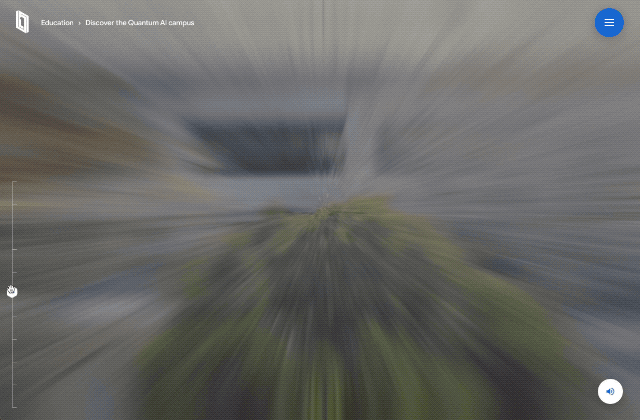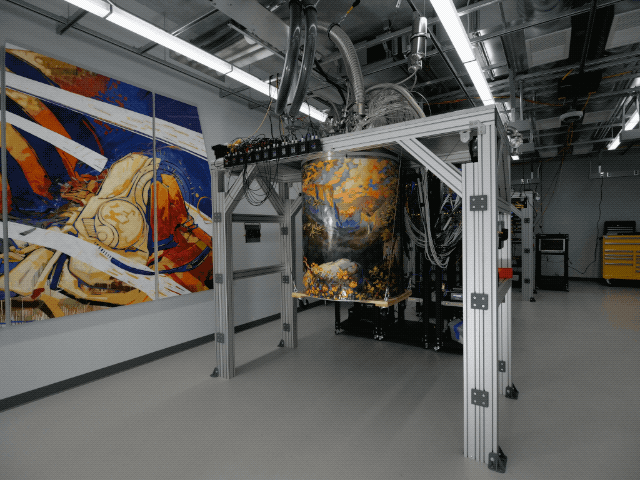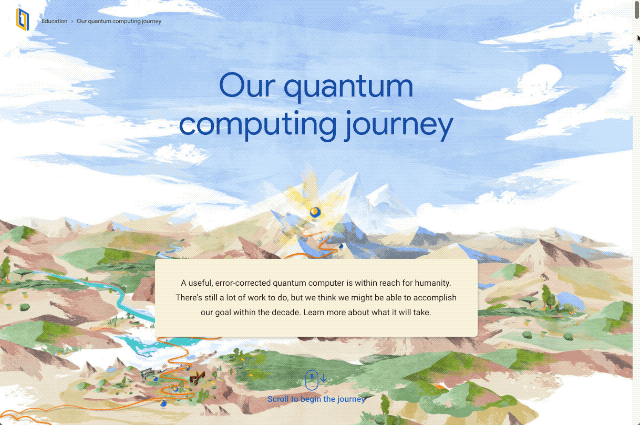Within the decade, Google aims to build a useful, error-corrected quantum computer. This will accelerate solutions for some of the world’s most pressing problems, like sustainable energy and reduced emissions to feed the world’s growing population, and unlocking new scientific discoveries, like more helpful AI.
To begin our journey, today we’re unveiling our new Quantum AI campus in Santa Barbara, California. This campus includes our first quantum data center, our quantum hardware research laboratories, and our own quantum processor chip fabrication facilities. Here, our team is working to build an error-corrected quantum computer for the world.

Our new Quantum AI campus in Santa Barbara, CA will include our first quantum data center, new research laboratories, and quantum processor fabrication facilities.
Google began using machine learning 20 years ago (for spell checking in Search), and led the deep learning revolution 10 years ago (advancing neural nets, the leading approach to modern AI). These advances in AI and other technologies have enabled many of the incredible applications we’re seeing today. As we look 10 years into the future, many of the greatest global challenges, from climate change to handling the next pandemic, demand a new kind of computing.
To build better batteries (to lighten the load on the power grid), or to create fertilizer to feed the world without creating 2% of global carbon emissions (as nitrogen fixation does today), or to create more targeted medicines (to stop the next pandemic before it starts), we need to understand and design molecules better. That means simulating nature accurately. But you can’t simulate molecules very well using classical computers. As you get to even modestly sized molecules, you quickly run out of computing resources. Nature is quantum mechanical: The bonds and interactions among atoms behave probabilistically, with richer dynamics that exhaust the simple classical computing logic.

The inside of our cryostats, like the ones found in the Quantum AI campus, are some of the coldest places in the universe, reaching temperatures around 10 milliKelvin
This is where quantum computers come in. Quantum computers use quantum bits, or “qubits,” which can be entangled in a complex superposition of states, naturally mirroring the complexity of molecules in the real world. With an error-corrected quantum computer, we’ll be able to simulate how molecules behave and interact, so we can test and invent new chemical processes and new materials before investing in costly real-life prototypes. These new computing capabilities will help to accelerate the discovery of better batteries, energy-efficient fertilizers, and targeted medicines, as well as improved optimization, new AI architectures, and more.

Our journey to build an error-corrected quantum computer within the decade includes several scientific milestones, including building an error-corrected logical qubit.
To reach this goal, we’re on a journey to build 1,000,000 physical qubits that work in concert inside a room-sized error-corrected quantum computer. That’s a big leap from today’s modestly-sized systems of fewer than 100 qubits.
To get there, we must build the world’s first “quantum transistor” — two error-corrected “logical qubits” performing quantum operations together — and then figure out how to tile hundreds to thousands of them to form the error-corrected quantum computer. That will take years.
To get there, we need to show we can encode one logical qubit — with 1,000 physical qubits. Using quantum error-correction, these physical qubits work together to form a long-lived nearly perfect qubit — a forever qubit that maintains coherence until power is removed, ushering in the digital era of quantum computing. Again, we expect years of concerted development to achieve this goal.
And to get THERE(!), we need to show that the more physical qubits participate in error correction, the more you can cut down on errors in the first place — this is a crucial step given how error-prone physical qubits are. We’re doing that research right now on our Quantum AI campus.
Already we run quantum computers that can perform calculations beyond the reach of classical computers. To continue this journey towards a useful error-corrected quantum computer and provide humanity with a new tool tuned to the way nature works, we’re assembling an amazing team to invent the future of computing together right here, right now, at Google’s Quantum AI campus.
-
Picture of the Sycamore quantum processor
The Sycamore quantum processor has 54 individually controllable qubits, and 88 tunable couplers. The couplers are used to enable fast quantum operations between qubits.
-
Current generation of cryostats
The current generation of cryostats that hold our quantum processors are about the size of three household refrigerators.
-
Art in the Quantum AI campus
Quantum computing could help us understand and simulate the natural world around us. The art in the Quantum AI campus is influenced by nature.
